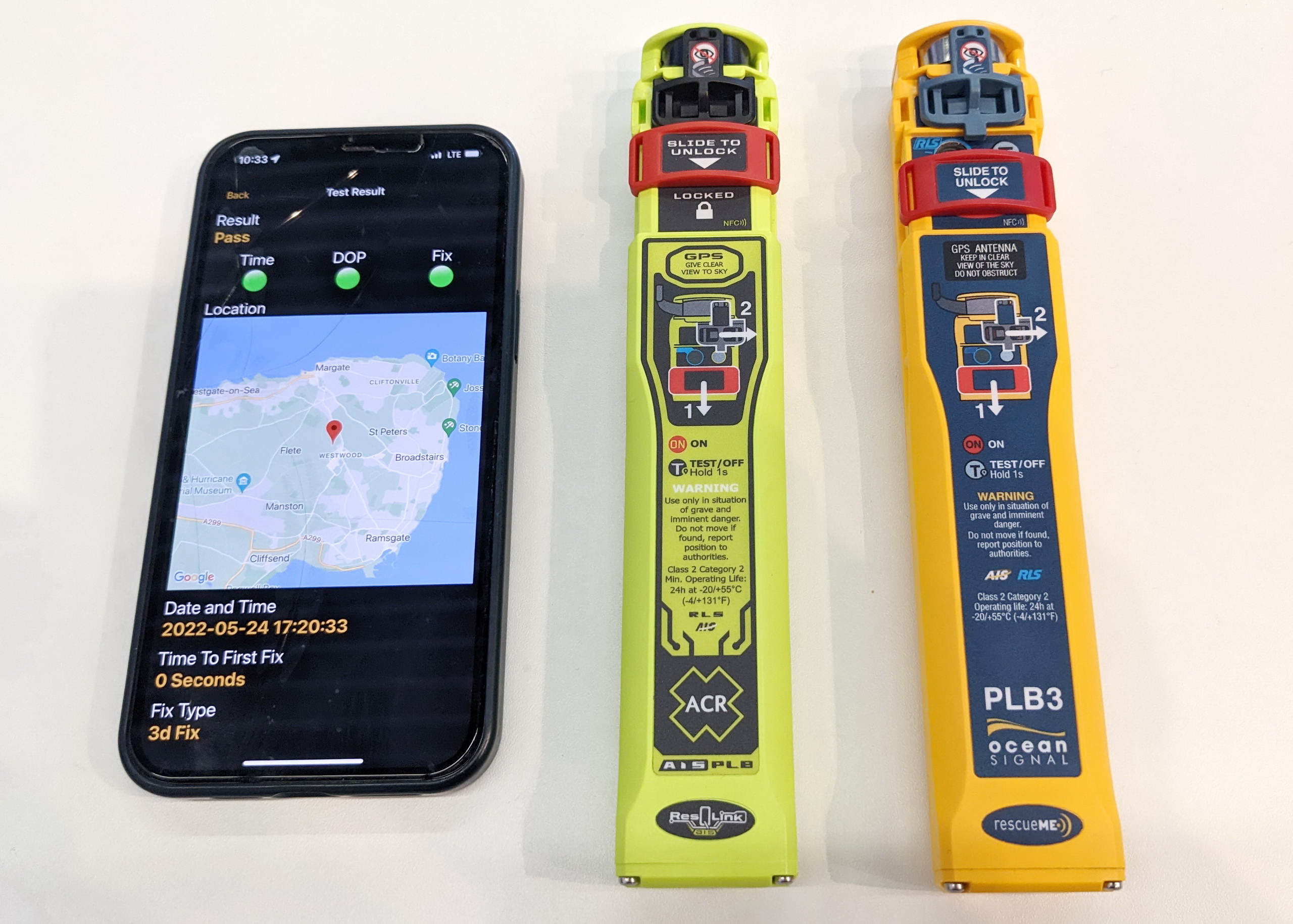EPIRB testing, definitely possible
![]()
While evidence of unusual EPIRB failure activity remains scarce, who doesn’t like the idea of testing their own, as often and as thoroughly as possible? So I always try to note what a new model’s self-test abilities are (though I didn’t have much detail on these GME PLBs just coming to the States). But even the best self-testing is surely limited. There are also professional test receivers—like Musson Marine’s and the WS Tech BT100 PDA-hosted systems—which measure real over-the-air 406/121.5 MHz transmissions, but I don’t know how available that service is to regular boaters. Anyone? Both GME and WS Tech, by the way, are distributed in the U.S. by EPIRB/PLB expert George Lariviere and his Whiffletree Corp.
Meanwhile, Chuck Husick had a reassuring experience having his EPIRB battery changed right in the ACR factory. But what really activated my buttons was the BeaconSure service I saw demonstrated at the Annapolis Boat Show back in 2003. The vendor fired off the EPIRB during a preset hour and was soon able to pull up the screen above showing that it had reached the satellites, been located, and been properly associated with the right contact information. In other words, a live end-to-end test, which seems ideal. BeaconSure, not surprisingly, is a subsidiary of Techno-Sciences, which builds and maintains COSPAS-SARSAT ground stations. I haven’t heard much about the service since I first covered it in 2004, but $60 seems a reasonable fee for such a test, and no shipping is required. Anyone tried BeaconSure?
So EPIRBS are being tested to some degree and possible real world failures are being investigated to some degree, and still there’s no sign of anything but very rare issues with the equipment or SARSAT system. Nonetheless Rob Stormer insists that we should force the authorities to somehow calculate an EPIRB “failure rate.” I’m still scratching my head over that concept. How are any meaningful statistics remotely possible for gear that’s hardly ever used, and then in chaotic conditions? Heck, last summer a truly sharp engineer told me that no marine electronic or power products are built, used, and serviced in large enough numbers to yield worthwhile failure rate data, and he’d really thought about it. Compare EPIRBs to automobile air bags. There are many more air bags built; many more are activated, and with many fewer installation or user variables; and their use is much easier to investigate after the fact. Obviously meaningful failure rates are much more possible for airbags, yet lawyers are still arguing about what they mean.
A prudent mariner will smile on Stormer’s failure rate fantasy, take good care of his/her EPIRB, test it as possible, and still know that it, like most anything else, may fail just when it’s most needed.













This is one good reason to use the SPOT device, because you use it all the time and know when it is working and when it is not. Unlike the special EPIRB that is only used once, as a last resort device, and for which you just have to hope that the signal gets thru. I don’t say that they are not useful, but there is a line of thinking in engineering that special-purpose equipment that is dedicated to a last-ditch safety function, and which is manufactured to a very high standard/price, is better/more reliable than equipment that is used every day. I am not sure that I buy into that argument, having worked in an industry where such special-purpose equipment is treated as the holy of holies.
Notwithstanding the testing issue (it is really hard to make meaningful statistical arguments about events that rarely happen, and when they happen, the conditions are rarely comparable) equipment that is used every day must be reliable, or else factories would not be able to make widjits reliable, or keep the electric power on.
I recall hearing that some COSPAS-SARSAT ground stations could process (without triggering the SAR system) the EPIRB self-test message required by section 4.5.4 of C-S T.007 , and surveyors could call the facility to verify the operation of the EPIRB.
It might be useful if the test message, when received by the ground station, could send an e-mail to the registered owner to indicate that their EPIRB test message was received.
Epirb testing can be done by any regular boater. What’s needed is a VHF scanner with a discriminator output and free Epirb-plotter software from here http://www.coaa.co.uk/epirbplotter.htm
As you know when you press the “test” button on an Epirb, it actually transmits a test message on 406Mhz band. A normal scanner can hear this message, and provided the scanner has a discriminator output you can plug it into your PC audio input. The software then decodes the message.
More info on discriminator output http://www.discriminator.nl/index-en.html
Total cost for a person with suitable scanner: 0. If you need a scanner, you can get one from Radio Shack for less than 50 bucks.